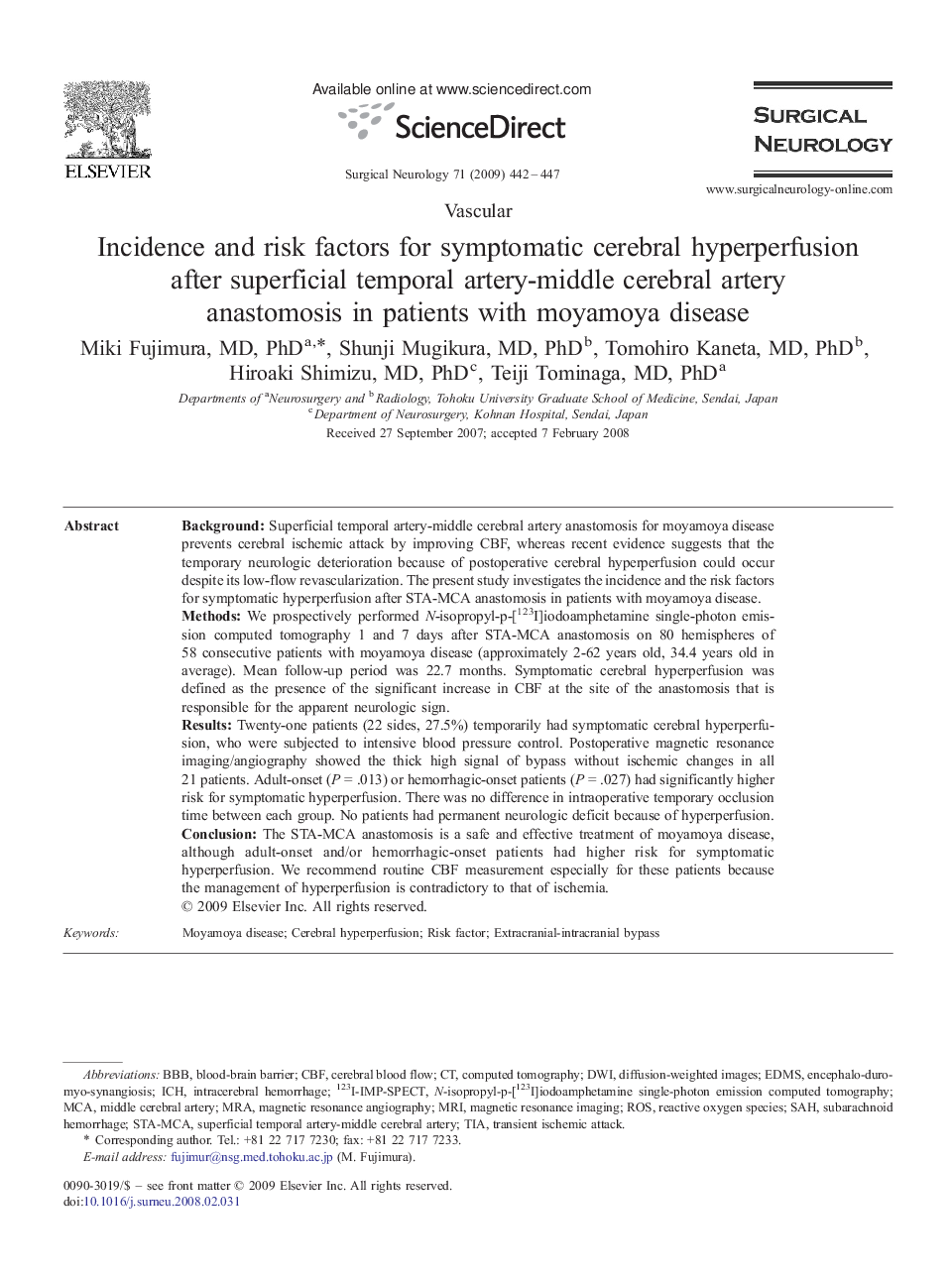| کد مقاله | کد نشریه | سال انتشار | مقاله انگلیسی | نسخه تمام متن |
|---|---|---|---|---|
| 3092564 | 1190516 | 2009 | 6 صفحه PDF | دانلود رایگان |

BackgroundSuperficial temporal artery-middle cerebral artery anastomosis for moyamoya disease prevents cerebral ischemic attack by improving CBF, whereas recent evidence suggests that the temporary neurologic deterioration because of postoperative cerebral hyperperfusion could occur despite its low-flow revascularization. The present study investigates the incidence and the risk factors for symptomatic hyperperfusion after STA-MCA anastomosis in patients with moyamoya disease.MethodsWe prospectively performed N-isopropyl-p-[123I]iodoamphetamine single-photon emission computed tomography 1 and 7 days after STA-MCA anastomosis on 80 hemispheres of 58 consecutive patients with moyamoya disease (approximately 2-62 years old, 34.4 years old in average). Mean follow-up period was 22.7 months. Symptomatic cerebral hyperperfusion was defined as the presence of the significant increase in CBF at the site of the anastomosis that is responsible for the apparent neurologic sign.ResultsTwenty-one patients (22 sides, 27.5%) temporarily had symptomatic cerebral hyperperfusion, who were subjected to intensive blood pressure control. Postoperative magnetic resonance imaging/angiography showed the thick high signal of bypass without ischemic changes in all 21 patients. Adult-onset (P = .013) or hemorrhagic-onset patients (P = .027) had significantly higher risk for symptomatic hyperperfusion. There was no difference in intraoperative temporary occlusion time between each group. No patients had permanent neurologic deficit because of hyperperfusion.ConclusionThe STA-MCA anastomosis is a safe and effective treatment of moyamoya disease, although adult-onset and/or hemorrhagic-onset patients had higher risk for symptomatic hyperperfusion. We recommend routine CBF measurement especially for these patients because the management of hyperperfusion is contradictory to that of ischemia.
Journal: Surgical Neurology - Volume 71, Issue 4, April 2009, Pages 442–447